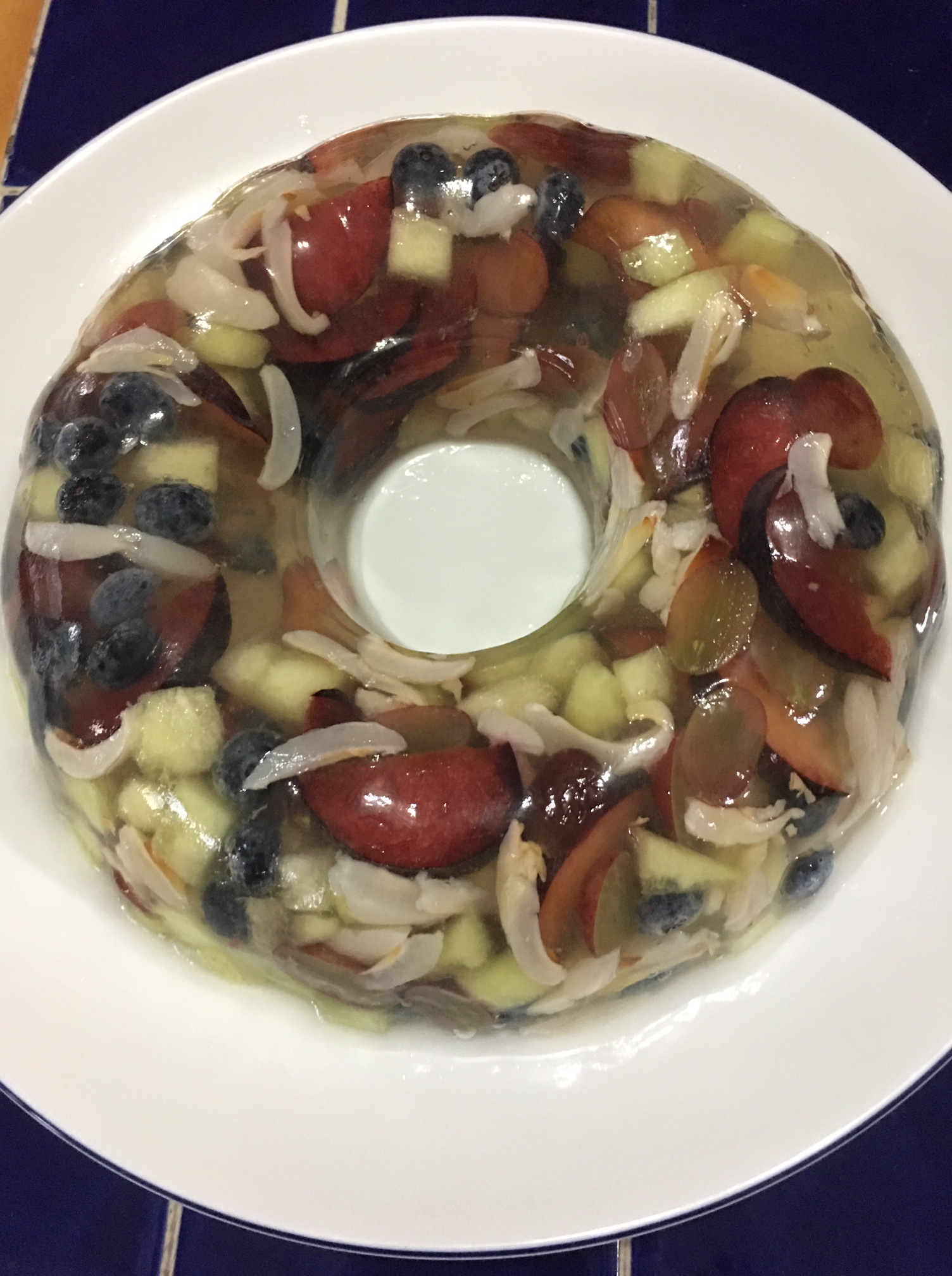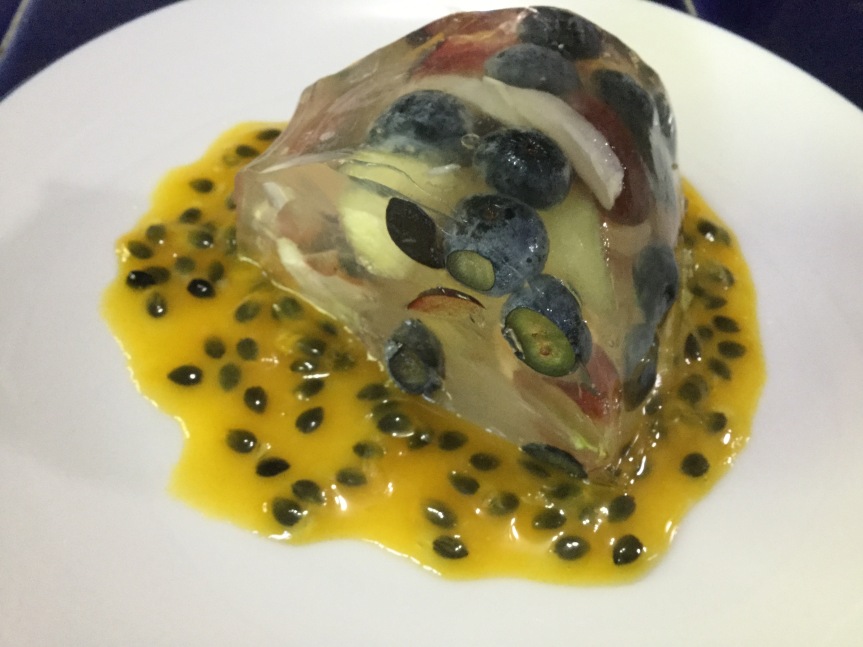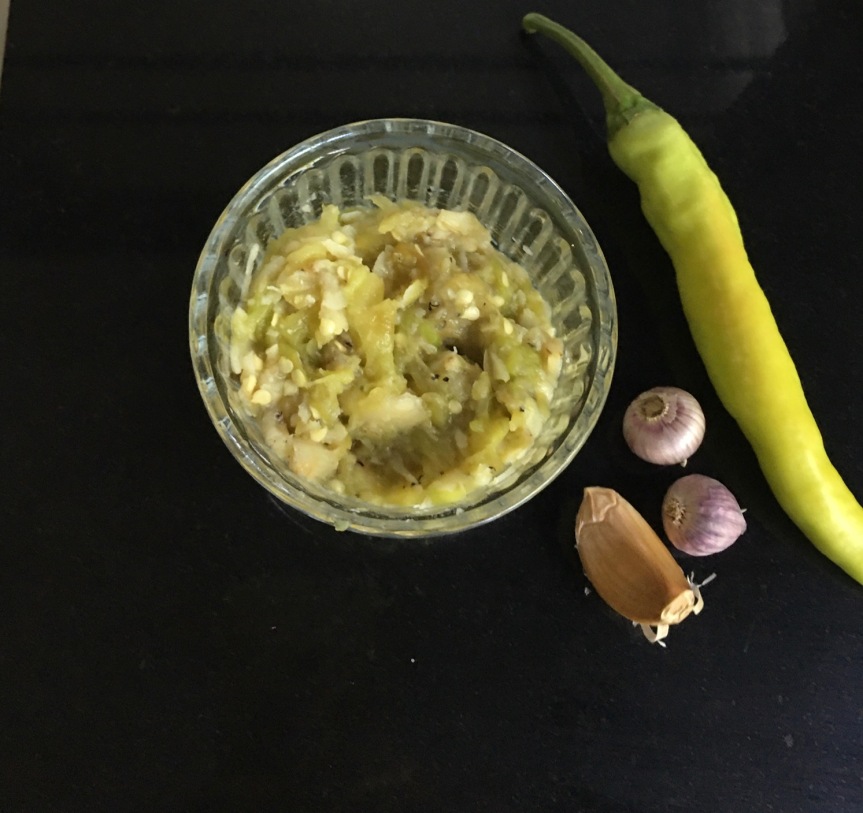
You know that feeling when you want something sweet but a slice of cake is too much? I came across this recipe on the Kitchn website when I was browsing. I thought, it’s got fruit, it’s healthy, and it’s light. Eating this is literally like having your cake and eating it too. It intrigued me because it’s not like the gelatin moulds back in the day, when it was a fanciful substitute for a vegetable (think: green Jello.). This was quite sophisticated and extravagant calling for elderflower liqueur and a whole bottle of sparkling wine. Chaiyo! Instead, I decided to make a non-alcoholic version, replacing the elderflower liqueur for lychee syrup and the sparkling wine for Sprite soda. The cake itself is slightly sweet and extremely colourful with the addition of fruit like green honeydew melon, red seedless grapes, lychees, blueberries, and sweet red plums. You can add any fruit you like, except kiwi, guava, papaya, mango, and pineapple which contain an enzyme that prevents gelatin from setting. I know because it happened to me. When that happens, make a smoothie!
Sparkling Sprite Fruit Gelatin Cake—non-alcoholic version (adapted from Kitchn)
Prep time: 40 minutes
Cooling time: 4 hours minimum
Vegetable oil
1/4 cup (4 x 1/4 oz envelopes) unflavored powdered gelatin
1/2 cup water
1/2 cup syrup from a tin of lychee
1 (750 ml) bottle of Sprite, soda must be fresh, not flat
3 tablespoons freshly squeezed lime or lemon juice, strained to remove pulp and seeds
2 small plums, pitted and sliced into 1/4-inch slices
1 cup tinned lychee fruit, drained, halved, and sliced into thin strips
3 cups fresh fruit halved or cubed if large (e.g. strawberries, melon, red or green seedless grapes, pitted cherries, whole blueberries, bananas, drained watermelon. Don’t use kiwi, guava, papaya, pineapple, or mango as they contain an enzyme that prevents gelatin from setting)
1/2 cup fresh mint leaves, rinsed and dried, optional
Passion fruit coulis (recipe following)
Very lightly coat a 10-cup Bundt pan or gelatin mould with vegetable oil, being sure to carefully oil all the nooks and crannies. Alternatively, use cooking spray, but I prefer to oil it myself as I have more control over getting the pan properly oiled. The surface of the pan should feel slippery to the touch and there should be no pools of oil at the bottom of the mould.
Combine fruit in a large colander and turn occasionally to drain juices. If using banana, add separately as the juices from the cut watermelon, cherries, plums, and strawberries can stain it. Refrigerate fruit until ready to use.
In a small bowl, place the gelatin. Add 1/2 cup water and whisk well to combine. Set aside to bloom for 5 minutes. Warm the 1/2 cup of lychee syrup in a small saucepan over medium heat until hot but not boiling. Scrape the bloomed gelatin into the pot and whisk until the gelatin is completely dissolved. Set aside to cool for 5 minutes.
In a large bowl, combine the Sprite and lemon juice. Scrape the gelatin mixture into the Sprite mixture. Stir gently to combine. Set this bowl inside a larger bowl filled with ice and water. Cool the gelatin in the ice bath, stirring occasionally, and scraping up the sides as it starts to thicken. The jelly may look cloudy at first but will become transparent as it cools. When the mixture thickens to the consistency of hair-gel, add the cut fruit. Add the banana cubes. Add the mint leaves, if using, and gently combine them all with a silicone spatula, distributing the additions evenly.
Scrape the jelly and fruit into the prepared mould. Shift the pan back and forth on the countertop to settle the gelatin. It will look lumpy but will become smooth as it cools and sets. Refrigerate until set, at least 4 hours or overnight. You can make this cake in the morning and have it for dessert that evening.
How to unmould the cake. Take the cake out of the fridge. Fill a large bowl with just enough room-temperature water to come up to the level of the gelatin cake in the mould, but not so much water that the pan floats or water spills on the gelatin. Don’t use hot water as it will melt the gelatin. Put the mould in the water-filled bowl and let it sit 5-10 minutes to loosen. Moisten your fingertips with water and gently press down on the edges of the gelatin, easing it away from the sides of the pan. Take the mould out of the water bath and dry the bottom with a towel. Cover the top of the mould with a large plate and invert both the mould and the plate. Gently shake the mould and the plate. If the jelly doesn’t fall out onto the plate, put the mould back in the water bath. The second time, I changed the water and tried easing the edges away from the sides again with moistened fingertips. After 5 minutes, I tried again. Success. So don’t hurry the process; be patient. Refrigerate the plated gelatin cake until ready to serve.
Make a passion fruit coulis. To a half-cup of fresh passion fruit in a small saucepan, add 50 g of sugar and bring to a boil. Remove the saucepan from the stove and taste. It should be tart but not sour, so add more sugar a teaspoon at a time to taste. Using a hand blender, puree the sauce so that the flesh separates but the seeds remain whole. If you wish to remove the seeds, strain the coulis. Chill coulis until ready to serve.
Slice gelatin cake with a sharp knife. Serve thick slices of cake with the chilled passion fruit coulis drizzled on top or as a sauce that pools around each slice.



